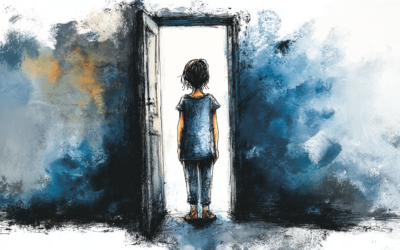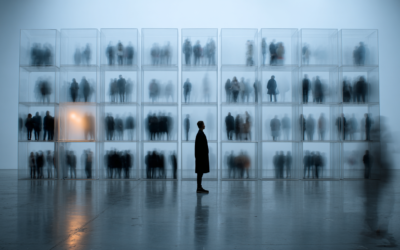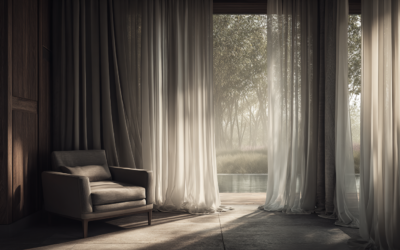TL;DR
Luxury isn’t fixed—it’s whatever feels rare. Over the past 100 years, luxury has shifted from survival and status symbols to personalized experiences and emotional relief. In today’s world of constant noise and abundance, the new luxuries are peace, privacy, and presence. Brands have adapted by selling scarcity in more subtle, emotional ways—from bespoke travel to “quiet luxury” fashion. Ultimately, what’s luxurious now isn’t what you own—it’s what you’re usually missing.
The Velvet Illusion
The most luxurious moment I’ve had recently wasn’t in a five-star resort or wrapped in cashmere. It was a Tuesday morning. My phone was off. Sunlight spilled onto the floor in a quiet square. The coffee was still hot. And no one needed anything from me—not for an hour, not even for five minutes.
That moment? It felt like velvet. Like silk across the nervous system. It felt… rare.
That’s the real secret of luxury: it’s not about money, or at least not just. It’s about rarity. Whatever is scarce in your life becomes the thing you crave most. And once something becomes rare, we begin to assign it worth. Emotional, social, sometimes financial. We protect it. We chase it. We pay for it, in whatever currency we have—dollars, time, attention.
This has always been true, but rarely said out loud. Because we tend to treat “luxury” as a fixed category: jewels, yachts, designer handbags. But the reality is, luxury is a mirror. It reflects not just what society values, but what it misses. And what society misses changes. Quickly.
Over the last hundred years, we’ve witnessed a remarkable shift: from the material to the emotional, from possession to presence, from show to subtlety. Luxury has moved—not vanished, just evolved.
And it all starts with one deceptively simple idea: what’s rare feels valuable.
Rarity as a Moving Target
Let’s get something clear upfront: luxury is not about the thing itself. It’s about its context.
A silk scarf in a marketplace full of wool is luxury. But in a market flooded with silks, it’s just another square of fabric. What makes something feel luxurious is how hard it is to find, afford, access, or replicate. Rarity is the secret ingredient.
Psychologists call this the scarcity heuristic. Our brains are wired to place higher value on things that are limited or hard to get. It’s survival logic: if something is scarce, it must be important. In the modern world, we’ve just applied that same logic to handbags and hotel rooms.
This idea of rarity isn’t just economic—it’s emotional. What feels scarce to you depends on your experience, your wounds, your desires. For someone who grew up in instability, a reliable daily routine might feel like the ultimate luxury. For someone overbooked and overstimulated, silence might feel like champagne.
So, what happens when society as a whole shifts? When what’s rare on a macro level changes? That’s when the definition of luxury itself begins to mutate.
Let’s trace it.
A Century of Shifting Luxuries
1920s–40s: Shelter, Safety, and Certainty
After World War I, a global flu pandemic, and the Great Depression, luxury wasn’t about excess—it was about enough. Enough to eat. Enough warmth. A bed that didn’t move. A family not at war.
In many homes, butter was a luxury. So were nylon stockings and heating in winter. For entire generations, luxury was indistinguishable from security.
Even love took on a new texture. Letters mailed across oceans, steady companionship, a promise to return—these weren’t just sentimental gestures. They were scarce. Therefore, precious.
1950s–60s: Normalcy and the Suburban Dream
With peace came prosperity—or at least the appearance of it. The postwar boom brought white picket fences, reliable appliances, and a singular cultural fantasy: the American Dream.
Luxury, in this era, was being able to conform. A TV in the living room. A car in the driveway. Steak once a week. These weren’t extravagant—they were the new benchmarks of having made it.
Rarity, here, meant stability. Not wealth. Just normalcy after years of chaos.
1970s–80s: Flash, Branding, and Individualism
The pendulum swung. Suddenly, luxury wasn’t about fitting in—it was about standing out. This was the era of designer labels, disco, and the golden age of advertising. Logos became status symbols.
You weren’t just wearing clothes—you were announcing your identity. “I’m not like everyone else.”
Travel became part of the luxury script. Flying to Tokyo or Paris wasn’t just leisure—it was proof of reach. Being able to consume the exotic became a sign of status.
Rarity moved from survival to spectacle. What was rare now? Visibility.
1990s–2000s: Customization and Access
Then, things got personal.
As globalization flooded markets with abundance—cheap goods, mass fashion, worldwide shipping—the real luxury became difference. Tailored suits. Boutique hotels. Bespoke perfumes.
You weren’t wealthy if you had the same thing as everyone else. You were wealthy if yours was made just for you.
Experiential luxury exploded: safari lodges, private island yoga, culinary tourism. The most valuable thing wasn’t the product—it was the story that came with it.
What was rare now? Time. Access. Personalization.
2010s–Now: Stillness, Privacy, and Emotional Relief
And then… it all got loud.
Phones in our pockets. Notifications in our sleep. Overwhelm, burnout, chronic comparison. The luxury of the moment? Stillness. A life with margins.
Luxury today is deeply personal, almost quiet. A weekend offline. A cabin with no Wi-Fi. A conversation uninterrupted by a screen. A single well-made thing you use for years.
Minimalism is now maximal. A walk without headphones? Radical. No calendar notifications for three hours? Decadent.
The rarest thing isn’t wealth. It’s sovereignty.
How the Luxury Industry Bottled Rarity
Luxury brands weren’t slow to notice this shift. They’ve made an art form of bottling scarcity—and selling it at scale.
Take Hermès. You don’t just buy a Birkin. You earn it. Through loyalty, purchases, patience. You join a secret economy where the highest status is exclusivity. The bag becomes a symbol of access more than taste.
Rolex does it differently: waitlists, scarcity by design. There are only so many of each model, and the brand controls supply ruthlessly. You don’t just get a Rolex—you prove you deserve one.
The same tactics apply to travel. Aman Resorts aren’t just luxury hotels. They’re temples to privacy. Low occupancy. No signage. Staff who remember your name and dietary preferences. You’re not just escaping reality—you’re escaping visibility.
Luxury’s sleight of hand is this: it doesn’t just sell you a product. It sells you a sense of difference. Not better—other.
And it adapts constantly. When logos became tacky, brands went stealth. Think Bottega Veneta’s no-logo policy. When materialism began to lose its shine, luxury pivoted to experience. Now, it’s shifting again—toward emotion.
The Emotional Economy of Luxury
Here’s the pivot point: luxury isn’t about goods anymore. It’s about states of being.
What do people crave that they don’t have?
- Focus.
- Rest.
- Connection.
- Freedom from obligation.
- A felt sense of enough.
That’s what today’s luxury industry is selling. You don’t pay $4,000 for a silent retreat in the mountains because the bed is made of clouds. You pay because the idea of not checking your email for five days is unimaginable in your normal life.
You’re not just buying peace—you’re renting your own nervous system back from the chaos.
And here’s the thing: as society gets faster, louder, more digitized, the rarest things will only grow more intangible. Spiritual stillness. A slow friendship. A clear head.
That’s where luxury is heading next.
What’s Rare for You?
So, what’s luxury to you—right now?
Not ten years ago. Not when you first got promoted. Not what an ad says. But in your actual life, this week.
Is it sleeping eight hours?
Is it feeling heard in a conversation?
Is it walking without your phone?
Is it drinking your coffee while it’s still hot?
Because that—that’s what luxury actually is: the things that feel just out of reach, but deeply desired. Not to impress anyone. Just to feel whole, for a moment.
Maybe luxury isn’t something you own. Maybe it’s something you reclaim. Quietly. Slowly. Repeatedly.
And maybe the true luxury is knowing that what’s rare doesn’t need to be bought—just noticed.



